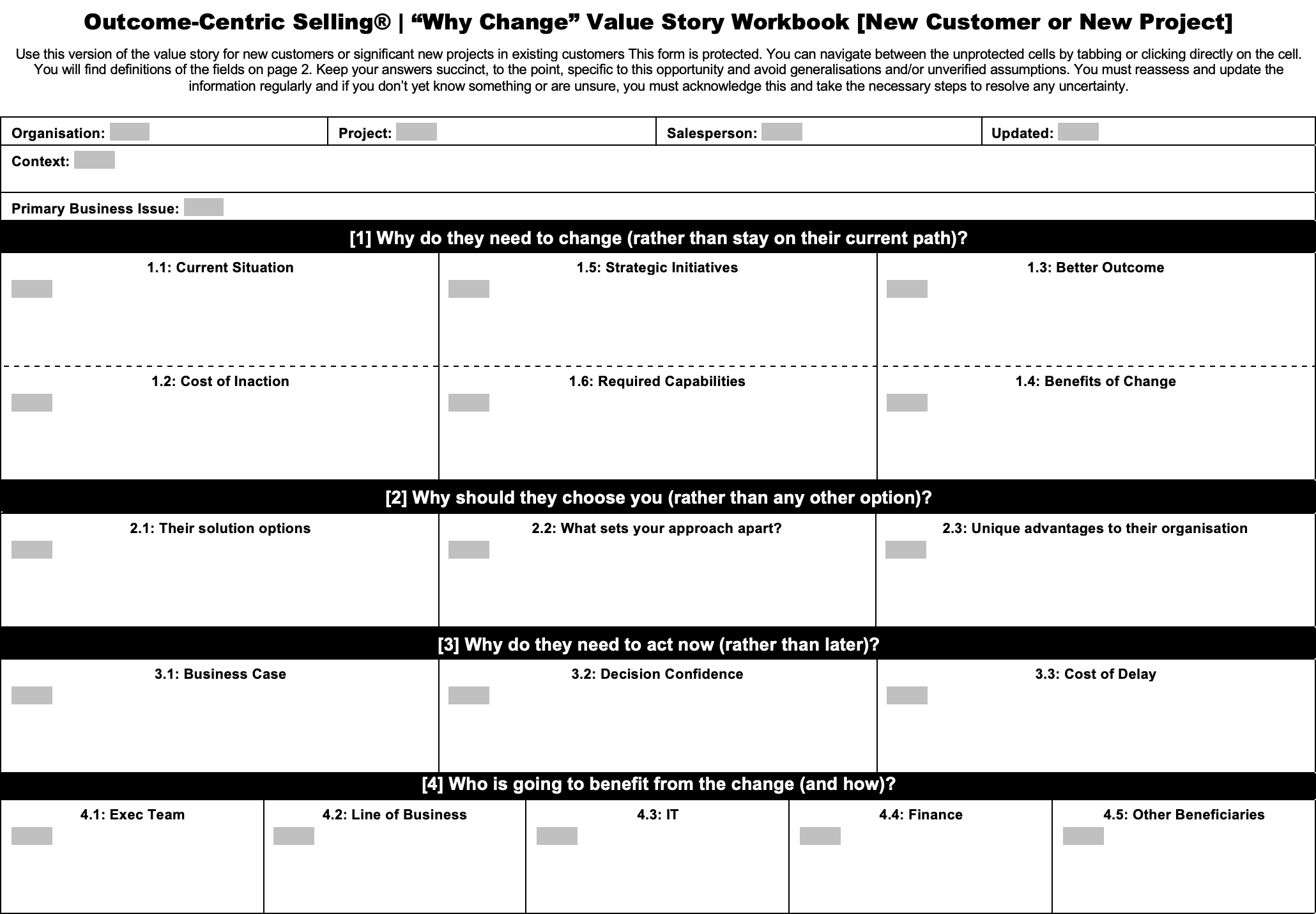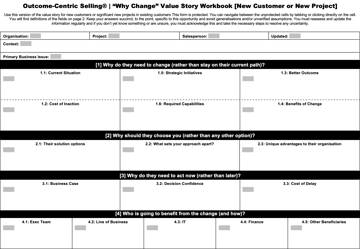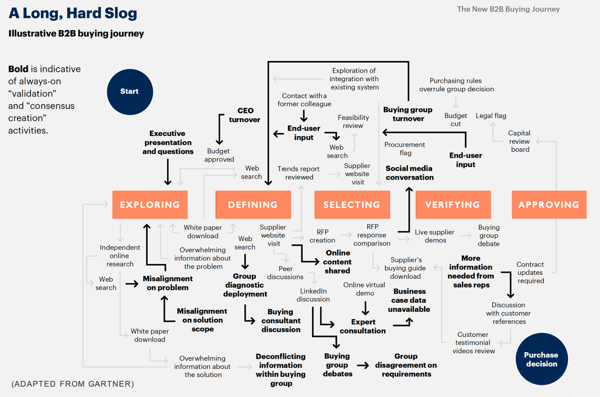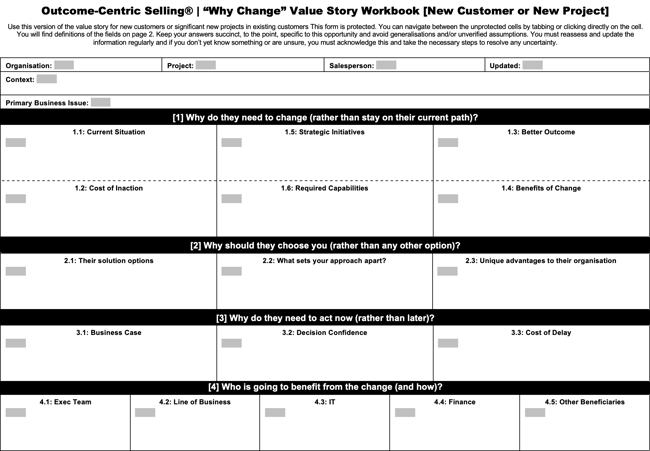Why a generic “unique selling proposition” isn’t enough...
November 23, 2021

 Marketers are keen to create what they refer to as “unique selling propositions”. According to Wikipedia, a unique selling proposition (USP) - also sometimes called unique value proposition (UVP) refers to “the unique benefit exhibited by a company, service, product, or brand that enables it to stand out from competitors”. This USP/UVP is then communicated in marketing messages and materials and reflected in sales tools
Marketers are keen to create what they refer to as “unique selling propositions”. According to Wikipedia, a unique selling proposition (USP) - also sometimes called unique value proposition (UVP) refers to “the unique benefit exhibited by a company, service, product, or brand that enables it to stand out from competitors”. This USP/UVP is then communicated in marketing messages and materials and reflected in sales tools
Now, whilst this concept might be sufficient to drive many B2C (business-to-consumer) purchases, and maybe a few simple B2B (business-to-business) transactional sales, the complex nature of most high-value B2B sales makes it an entirely inadequate and incomplete way of establishing genuine and relevant value.
In complex B2B buying journeys - which nowadays frequently involve double-digit numbers of actively engaged stakeholders - the idea that the same single generic unique selling proposition that is trotted out to every other potential customer is going to persuade a wide range of different decision-making and approval groups is an obvious nonsense.
And whilst a generic value proposition might be enough to attract the prospective customer’s initial attention, every qualified prospect deserves and needs their own unique value story - and if you are to earn their support, every stakeholder must recognise the benefits that your proposal will bring to them and the function they represent.
Every prospect deserves and needs their own value story
I’ll acknowledge that generic value propositions have a potential role to play at the start of your prospect’s buying cycle - but even then, rather than a “one-size fits all” message, you’re better off using variants of the generic value story that are tuned to appeal to certain issues, market sectors and roles.
These tuned generic value stories can offer an initial hypothesis about what is likely to be interesting to your intended target audience - but they need to be quickly and progressively replaced as a result of an ongoing process of discovery with a customer-specific value story that reflects the unique circumstances and priorities of the prospect organisation as well as the interests of the key members of the decision-making and approval groups.
As your sales cycle advances - and as your prospective customer’s decision-making journey progresses - this inevitably somewhat generic, hypothesis-led provisional value story progressively evolves into something that is uniquely aligned with this specific customer’s particular situation.
Four questions every prospective customer is asking
By now, many of you will be familiar with Gartner’s infamous “spaghetti diagram” that reflects the complex and convoluted nature of a typical significant B2B buying decision journey. It visualises the tortuous path that your prospective customers go through when deciding whether, how, when and why to make a significant investment.

Their stakeholders will inevitably be looking for answers to four key questions before they can establish a consensus for change:
- Why do they need to change, rather than continuing on their current path?
- Why should they choose you, rather than any other option?
- Why do they need to act now, rather than later?
- Who is going to benefit from the change, and how?
If the answers are not personalised to both the priorities of the organisation as a whole and the interests of the key stakeholders - and if the stakeholders cannot agree on the best way forward, the prospect’s decision journey is likely to be either left in limbo or abandoned altogether.
It should be clear that demonstrating the superiority of your approach (i.e., answering the “why you” question) is unlikely to be enough to ensure that you win their business. You also need to convince them of the need for action, to persuade them that action must be urgent, and to ensure that their decision-making and approval groups all see a benefit in approving the project.
Establishing your unique value
Establishing your prospective customer’s unique value story is inevitably a complex, iterative and evolutionary process. You cannot hope to complete it in one conversation. And even if you start with a credible initial hypothesis, you will inevitably need to customise it in the light of what you have discovered and what you have agreed with the stakeholders.
That’s why I am such a strong believer in using a formal framework to assemble and verify the key elements of each customer’s unique value story. It’s why I am such an enthusiastic proponent of the need to establish a clear contrast:
- Between your prospect’s current situation and their desired better future outcomes
- Between your approach and all their other options, and
- Between the downsides of delay and the upsides of urgent action
And - having established the widest possible gaps between those extremes - we also then need to establish the strongest possible consensus in the form of a bridging theme that unifies all the key stakeholders.
Here’s an example of the sort of framework I recommend:

The framework guides salespeople in progressively answering their prospective customers all-important " why change?", "why you?", "why now?" and "who benefits?" questions.
If you’d like to learn more about applying these principles to your own organisation’s sales process, please drop me a line or book a Zoom call.
About the Author
 Bob Apollo is a Fellow of the Association of Professional Sales, a founding contributor to the International Journal of Sales Transformation, a recognised Sales Futurist, an active member of the Sales Experts Channel, and the driving force behind Inflexion-Point Strategy Partners, the leading proponents of outcome-centric selling.
Bob Apollo is a Fellow of the Association of Professional Sales, a founding contributor to the International Journal of Sales Transformation, a recognised Sales Futurist, an active member of the Sales Experts Channel, and the driving force behind Inflexion-Point Strategy Partners, the leading proponents of outcome-centric selling.
Following a successful corporate career spanning start-ups, scale-ups and market leaders, Bob now works as a strategic advisor, mentor, trainer and coach to ambitious B2B sales organisations - teaching them how to differentiate themselves through their provably superior approach to achieving their customer's desired outcomes.


Comments